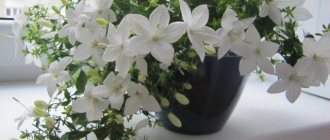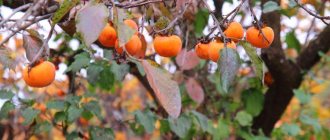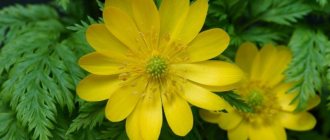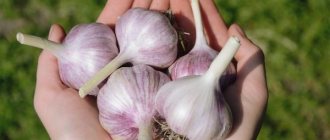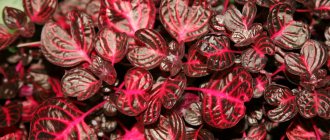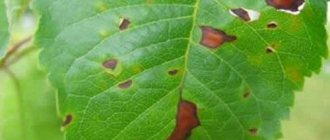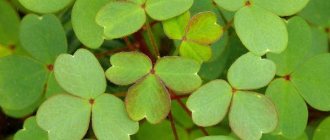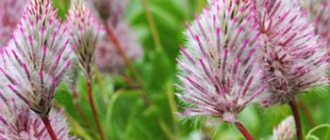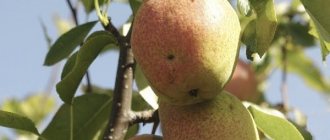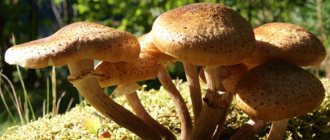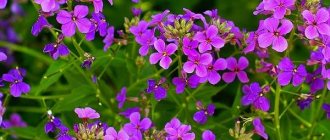Description and types of plants
Holly grows in the form of trees or shrubs belonging to the family of the same name. Other names for the plant are ilex or holly.
Holly shoots have a pointed shape. The leaves are dense, leathery, often dark green in color, sometimes may have a yellow edge, and are shaped like oak leaves. Holly shrub has high decorative properties.
Holly flowers are rather inconspicuous - small, light. They appear in the spring from the axils of the leaves. It is noteworthy that male and female flowers grow on different trees, so you need to plant plants of both sexes in the same area to get fruits.
The fruit of the holly is a berry, it comes in different colors:
- black;
- red;
- yellow;
- white;
- orange.
The berries ripen in the fall and remain on the bushes all winter.
Holly is highly resilient. It is able to grow in the deepest shade, where seeds of other plants do not take root. Distributed on almost all continents. There are about 400 species of holly in the world. Among them there are evergreen and deciduous species, shrubs and vines.
The most common types are:
- Common holly or holly is a tree with a height of 10 to 25 meters. The trunk with a diameter of 40−80 cm is covered with smooth gray bark. The dense, leathery leaves grow alternately and have the shape of an oval or ellipse, with jagged edges. The upper side of the leaf blade is dark and shiny, the lower side is lighter. The fruit is a round, bright red drupe up to 1 cm in diameter. Holly holly bears fruit from September to February. The plant easily tolerates temperature drops down to -20 degrees.
- The evergreen Paraguayan holly reaches a height of 1 to 6 meters. The species is distinguished by large (up to 16 cm in length) pointed leaves. The fruit is a small red drupe. Paraguayan holly grows in South America.
- Chinese or broadleaf holly is considered the closest relative of the European holly.
- Meserve holly is a hybrid species of Korean and rugosa. It is distinguished by the bluish-green color of the leaves. The fruits of this species are often red, but can be yellow or white.
- Crenate holly comes from Sakhalin, where it grows up to 7 meters in height. A distinctive feature is its rich greenery, similar to boxwood.
- Colchis holly is a shrub no more than half a meter high. It features beautiful, shiny, richly colored foliage.
Holly appearance and types
A tree trunk with a diameter of 100 cm is quite strong, reliable and does not rot.
Characteristic is its light color with beautiful green veins.
Holly wood is too valuable and is used exclusively for arts and crafts and decoration.
Holly is not the only tree used to weave Christmas decorations for the winter holiday of Christmas.
Thanks to the remaining bright drupes densely dotted with branches, other tree species are also being turned to: whorled holly, deciduous. These species are already without leaves for the Christmas holidays, but it is not because of their green shoots that they are usually woven into a traditional wreath.
The variety of holly species is impressive: the varieties Meserva and Altaclerensis are distinguished by their variegated foliage with its heavenly shades and red, orange and yellow berries.
How to Plant Holly
The plant does not require special attention when growing. It is best to plant it in shaded areas; it does not like direct sunlight. The area where the shrubs will be planted must be protected from drafts and wind.
The soil should be prepared light and well moistened. It is very important to ensure good drainage. In heavy soil, holly has difficulty surviving winters and grows very poorly.
Planting young bushes in the ground is carried out according to the following rules:
- The soil in the pot with the seedling is thoroughly watered before planting. This will soften the earthen lump, after which it can be easily pulled out.
- Planting holes are prepared in advance on the site. Their sizes should be 2-3 times larger than the size of the pots with seedlings.
- Drainage is poured into the bottom of the hole. The layer thickness should be at least 3-4 cm. Broken brick, small crushed stone and other materials with similar properties are suitable for this purpose.
- A mixture of soil and humus is poured onto the drainage. Each hole will require approximately half a bucket.
- The seedling is placed vertically in the hole, the roots are straightened and sprinkled with soil. The root collar is slightly buried, then the roots will not be exposed after the soil settles.
The seedlings need to be watered abundantly, but moisture should not be allowed to stagnate in the root system.
Growing conditions and care for holly
All types of holly tolerate partial shade and shade well without experiencing discomfort. However, they also develop excellently in the sun. By the way, young shoots should be protected from sunlight in the spring. They prefer nutritious soils with a high humus content, well drained. If you have light loam, add humus and sand to it to improve the mechanical and nutritional properties of the soil.
It is difficult to transplant, but if it is absolutely necessary to replant the plant, do it in early spring, then the operation will take place with minimal damage.
Outdoor care
Adult plants do not need additional watering; they usually have enough natural precipitation. The soil near the trunk needs to be loosened periodically.
At the beginning of the spring season, the crown is formed. In holly it is usually very neat and grows slowly. During pruning, dried, damaged and weakened shoots are removed. A curly haircut can be done as desired.
To prevent the plant from getting sunburn, it needs to be shaded.
Holly is fertilized in spring. To do this, the area around the trunk is sprinkled with compost, to which mineral fertilizers are added.
With the onset of cold weather, holly needs to be covered. The soil is covered with dry sawdust or peat. You can protect the shrub from frost using dry leaves or spruce branches.
Description of holly
Hollies are unpretentious - they tolerate shade well, easily withstand topiary, grow slowly and can live up to a hundred years. Perhaps the only drawback of most hollies is their low winter hardiness. For example, European holly (holly) can only withstand short-term frosts (maximum limit: -20°C).
In the North Caucasus, holly is found in natural conditions, but its specimens, growing in the upper part of the forest belt, do not look decorative at all and do not exceed the depth of the snow cover in height.
European holly in our country can be grown as a tub crop (in a winter garden). However, there are species and varieties that are more adapted to the conditions of our region.
It is important to remember that hollies are dioecious plants, so two specimens should be planted in the garden at once. If you do not adhere to this rule, the plants will not be decorated with berries (namely, they give the hollies their special beauty).
Types and varieties of holly
Hybrids and varieties can withstand prolonged hypothermia (below -20 °C):
Meserve (Ilex x meservae) Blue Baron Blue Maid Blue Princess China Boy China Girl
In addition to holly (European holly), the following are grown in cultivation:
Wrinkled holly (I. rugosa) - it grows naturally in the Far East. This species is a low or creeping evergreen shrub that overwinters under snow cover. Colchis holly (I. colchica) – the plant’s homeland is Transcaucasia and Asia Minor. This species is characterized by relative frost resistance and can be grown in central Russia. In winter it often freezes, but in the spring it quickly recovers. Crenate holly (serrated holly) - this species grows in Japan and southern Sakhalin. In Russia, low-growing varieties of this species are grown (at home, the tree can reach a height of seven meters).
Holly propagation methods
Hollies reproduce by seed and vegetative methods. Seeds need stratification for 18 months (under natural conditions they undergo natural stratification, passing through the digestive tract of birds).
In cultivation, hollies are usually propagated by cuttings (all other advantages of this method include the preservation of the varietal characteristics of the plant).
Holly cuttings are cut from semi-lignified shoots of the current season. For cutting, use a sharp garden knife. Length of shoot sections: 4–5 cm (each cutting should contain 1–2 internodes). The cuts are made oblique: the lower cut should pass under the kidney, and the upper one should pass above it.
The cut cuttings are immediately planted in greenhouses. Optimal substrate: a layer of humus (8–12 cm), covered with a layer of sand 3–4 cm thick. Planting depth of holly cuttings: 1.5–2 cm.
Cuttings planted in the substrate are regularly sprayed, protected from bright sunlight, and care is taken to ensure that the temperature does not drop. The rooting process takes 2–4 weeks. Cuttings with a well-developed root system are transplanted to a permanent location.
Choosing a site for growing holly
In Russian conditions, heat-loving varieties of hollies are often grown in tubs, taking them outside during the warm season. Frost-resistant varieties can become a real decoration of the garden.
Hollies are suitable for shaded areas of the garden with moist (without stagnant moisture), nutritious and light in composition soil. The place must be protected from the wind.
Holly care
Hollies need shelter from the cold - it is constructed from spruce paws and dry leaves. The tree trunk circle is mulched with sawdust or peat. Shade hollies in spring to prevent sunburn.
The tree trunk circle is loosened, dried or dead branches are removed. For varieties with variegated leaves, shoots with monochromatic foliage are cut off. In the spring, the tree trunk circle is covered with compost mixed with complex mineral fertilizer.
In most cases, plants do not need additional watering - hollies have enough soil moisture. Topiary trimming of plants is done at will - hollies grow slowly and naturally have a neat crown.
Hollies are among the popular ornamental crops. Some plant species are successfully grown in our region.
© When copying site materials, keep an active link to the source.
Holly, or as it is also called Holly, is an ornamental shrub that has recently become increasingly popular. This attention of gardeners to the plant is associated, first of all, with the beauty of its foliage, the bright color of the berries, which can be red, yellow, orange, white and even black. Another special feature of Holly is that the berries remain on the bush throughout the winter.
Reproduction by cuttings and layering
To propagate holly, layering or cuttings are most often used. This method is faster and more effective than propagation by seeds. The stages of propagation by cuttings are as follows:
- For planting, select annual shoots that have not yet become lignified and cut cuttings 10–12 cm long.
- All leaves are removed from the lower third of the cutting.
- The tips of the shoots are dipped into the rooting agent solution and placed in a container of water until roots appear.
- You can use special cups for rooting. Seedlings should be kept on a windowsill in a shaded place.
With proper care, seedlings will be obtained in 2-3 months. Cuttings that were germinated in water are additionally planted in pots with soil. It will be possible to plant young plants in open ground only next spring. During the warm season, young bushes have time to mature and grow powerful roots. However, for the winter they need to be sprinkled with peat and covered with spruce branches.
If holly is already growing on the site, it can be propagated using layering. To do this, the branches are tilted and lightly sprinkled with earth. The procedure for such reproduction will be as follows:
- The leaves on the shoot are removed, after which it can be secured with metal brackets and sprinkled with soil.
- After 2-3 months, the cuttings will take root and begin to form new shoots.
- Such a seedling is left to grow throughout the year. The following spring, the shoot is separated from the mother bush and transplanted to a new location.
Reproduction by seeds in the holly's natural habitat takes 1.5 years. On a garden plot, you can wait 2-3 years for seedlings to appear. Since the plant is dioecious, it requires artificial pollination.
The most common types
There are about 400 species of this plant in total, but we will look at three of them.
holly
Found in Asia Minor, Southern Europe, and North America. This is an evergreen pyramidal or spherical tree, reaching a height of up to 15 meters. Its lifespan is up to 100 years. It grows in nature even in the North Caucasus. Outwardly, it looks like a Christmas tree.
Its branches are spreading and short. The crown is dense, oblong or pyramidal. The leaves have an oblong-ovate shape with wavy edges.
Holly holly flowers are white, fragrant, small. They will remain on the branches for 14 days. Then they will be replaced by bright red fruits, the size of which can reach up to 1 cm. They remain on the stalks throughout the winter.
This species can easily be located in the shade, is resistant to frost, and tolerates temperatures down to minus 22 degrees below 0. The plant, located in central Russia, is not able to winter, so it is grown only in winter gardens.
It is worth knowing that holly is the variety through which other varieties were developed. It is a dioecious plant with a deep root system. Fertile neutral soil is suitable for growing this species. It prefers either full shade or partial shade. It perfectly withstands smoky, polluted air.
Crenate holly
This plant is native to Sakhalin and the Kuril Islands. This species can be either a tree up to 7 m high or a shrub. The latter is less common.
Crenate holly stands out for its dense greenery, reminiscent of boxwood in appearance. Bred in Japan. In this country it is a dwarf topiary shrub.
Holly meserva
This is a hybrid of common, wrinkled and Korean holly. It is especially common in Russia, as it can withstand frost well. This species has many varieties, the leaves of which are darkish, blue-green in color.
This plant loves shade, rich, light and moist soil. A substrate made from the following components is perfect for growing: humus, peat, sand, clay mixed with activated carbon. Drainage is also necessary. Its thickness must be at least 3 cm.
Holly holly requires cross-pollination. Therefore, you should have several such plants on the site. You can combine varieties by planting male and female trees next to each other.
It should not be planted in a place where there is a lot of sunlight. The plant may suffer from this, so the best place for it is where there are no bright rays. However, there are bicolor species that have variegated leaves. In order for them to retain their color, these plants should be planted in a place with bright light.
Holly does not tolerate excessive heat. In the summer, it is recommended to move it to a room where the air temperature will not exceed 20 degrees Celsius. Only young plants should be replanted every year. After that, as needed, every 3-4 years. In the spring it is simply moved to a larger container.
Main methods of reproduction:
- seeds;
- cuttings. This method is more common. Semi-lignified cuttings 10 cm long are required. To root them at the end of summer, the cuttings are placed in a peat-sand mixture and placed in a place where there is no direct sunlight and high temperature. After the roots have appeared, the cuttings are planted in separate containers.
Since holly is a beautiful tree, it is often grown in pots. At home, the tree needs to be replanted in the spring every 2 years into a larger pot.
Holly holly does not require excessive attention. Both sandy and clay soils are suitable for it. The main thing is that they are waterproof and humus is present.
The plant does not like drought. In summer, when it is hot, it should be watered abundantly. By winter, the amount of watering should be reduced to moderate, preventing the soil from drying out. Pruning should be done after fruiting has ended.
In spring, young plants should be covered to protect them from sunlight. From spring to autumn, once a month you should feed the tree with liquid complex fertilizer, diluted in the following ratio: 30 ml per 10 liters of water.
Holly in landscape design
On a personal plot, the plant can be planted in groups or individually. In both cases, the holly tree will serve as a magnificent garden decoration.
If you create a hedge from shrubs, it will reliably protect the area from the winds. This hedge has an attractive appearance and retains its shape for a long time. In many cultures, holly is credited with magical properties. To protect your home from uninvited guests, shrubs are planted around the perimeter of the estate.
Dwarf holly trees look very good in topiary form. In landscape design, holly goes well with hydrangea, euonymus or mahonia.
Use in folk medicine
Almost all above-ground parts of holly are used for medicinal purposes. Infusions and decoctions from them have healing properties:
- For diseases of the upper respiratory tract, an infusion of leaves is taken as an expectorant and diaphoretic.
- A powder is prepared from the flowers and leaves and used as an antipyretic and anti-inflammatory agent for rheumatism or fever.
- The leaves also have antiseptic and cardiotonic properties.
- Compresses and poultices are prepared from holly bark, which are used for fractures and bruises. This remedy relieves pain well.
- A decoction of the bark is taken as a diuretic and for severe coughs.
- The berries of the plant in small doses have an astringent, laxative and emetic effect.
The leaves and berries of any type of holly contain a toxic substance - ilicin. Eating large quantities of berries can cause serious poisoning, even death.
Signs of poisoning may include dizziness, nausea, sudden loss of strength, vomiting, and diarrhea. When these symptoms appear, immediately rinse the person’s stomach and give a cleansing enema. Be sure to call emergency services.
To prepare a universal infusion from holly leaves, you will need 2 tablespoons of crushed raw materials. It is poured with 150 ml of vodka and infused for 7 days in a dark place. The resulting product is filtered and taken 25 drops, dissolved in 50 ml of water. Drink the infusion 3 times a day 30 minutes before meals.
To restore strength in case of physical and mental fatigue, pour boiling water over a tablespoon of leaves and leave for half an hour in a thermos. The strained mixture is drunk three times a day, 1/3 cup between meals.
Tonic mate tea is prepared from the leaves and young shoots of the Paraguayan holly. The leaves contain a large amount of caffeine. This tea has a positive effect on the human condition. And another healing drink is prepared from the leaves of the Chinese holly - kudin. It improves digestion and stimulates the stomach, increases body tone, reduces cholesterol and lipids in the blood, helps get rid of excess weight, and protects against radioactive exposure.
It should be remembered that all types of holly contain poisonous components, so treatment should be carried out under the supervision of a doctor.
Possible problems during cultivation
Holly is a dioecious plant, so it has male and female specimens. To get ornamental shrubs with bright, beautiful fruits, you need to plant a male and female plant at a close distance on the site. The fruits are produced on a female bush or tree.
To get flowers and berries, you must remember that they appear only on two-year-old shoots. This should be taken into account when pruning. If you cut the shoots too short, flowers may not form. If pruning is done in summer or autumn, there is a risk of cutting off flower buds. Therefore, it is better to postpone the haircut until spring.
If the plant lacks moisture, its flowers and ovaries will begin to fall off. Therefore, the soil should not be allowed to dry out. Lack of nutrients and too acidic soil are also harmful to holly. Severe winter frosts or late spring frosts can damage the fruits. However, the plant also tolerates extreme heat extremely poorly.
Holly growing in depleted acidic soils or weakened by drought may be susceptible to fungal diseases. Externally, such a lesion looks like purple spots on the leaves. In some cases, holly is affected by late blight. The root system of the tree begins to rot, which leads to its death. This disease has no cure. The affected plant will have to be destroyed.
Types and varieties of holly with descriptions and photos
Rugosa holly Ilex rugos
Wrinkled holly - Ilex rugosa Fr. Schmidt
The entire Far East from Primorye to Sakhalin was “occupied” by wrinkled holly. Preference is given to fir-spruce and cedar-spruce forests. Belongs to evergreen creeping shrubs. Its height does not exceed 0.5 meters. Does not tolerate excessively cold winters, partially frostbiting. It is not suitable for landscaping park areas and summer cottages.
In the spurs of the Sikhote-Alin in the shade of Ayan spruce trees, wrinkled holly is found both individually and in groups. It is very comfortable here, since a thick blanket of snow saves the plant from destructive frosts in winter, and in the summer, due to the high humidity, very favorable conditions are created for its growth.
Holly is common to the inhabitants of Sakhalin, as well as the southern Kuril Islands. This plant is the oldest representative of the flora throughout the Far East. Even in the Tertiary period, wrinkled holly grew in the region along with beech and magnolia. And only a miracle helped this trio survive on the islands of the southern Kuril Islands. In Primorye, magnolia and beech have become extinct.
Whorled holly Ilex verticillata
Deciduous whorled holly in the photo variety Ilex verticillata Maryland Beauty
It is a close relative of the holly and is common in North America. It is a deciduous form. It grows in height from one to three meters, the crown is dense and densely covered with fleshy leaves of rich color. The flowers are inconspicuous and small. Bright dark red berries can only be seen on pistillate plants, but for pollination to occur, staminate specimens must also be planted.
Among the hollies there are many deciduous species. The whorled holly, which grows in North America, is famous for its greatest ornamental value. It grows along river banks, in swamps and loves moisture. Prefers humus soil in the shade of the southern side of the garden plot. Sunny places are simply contraindicated for him. Requires special protection from winter sun rays. Does not tolerate drought. Its branches have an olive-purple tint, and large elliptical leaves change color from dark green to yellow-orange with the onset of autumn.
